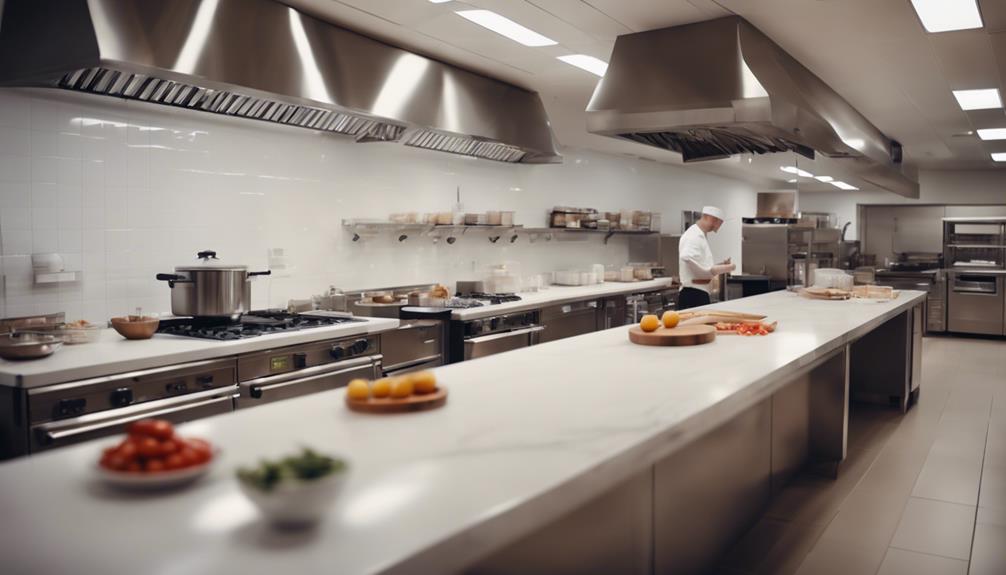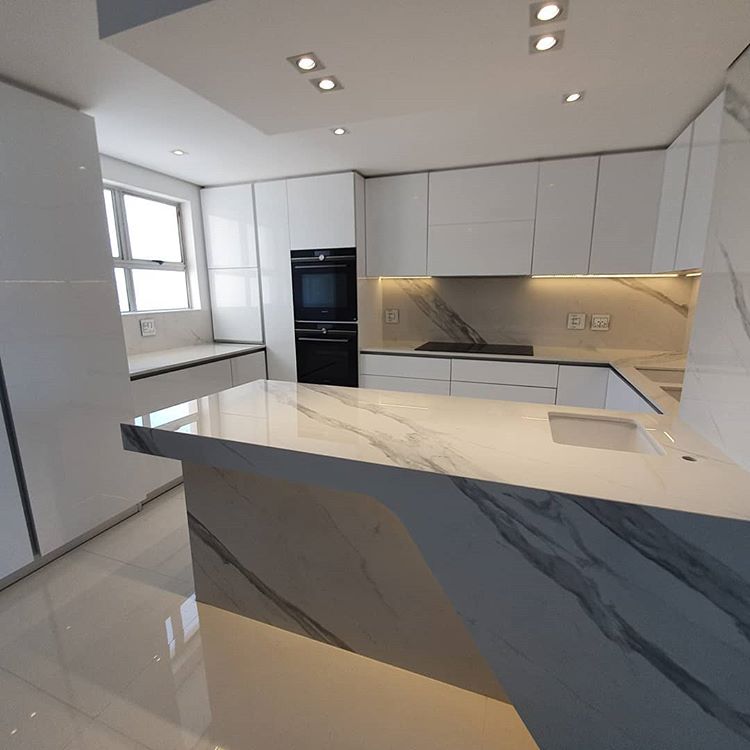In the realm of stone installation, the choice between natural and engineered materials is crucial, and mastering the specific methods required for each can significantly impact the appearance and longevity of the finished surface. Understanding the unique techniques essential for these different stone types is key to ensuring a successful installation that enhances the visual appeal of any space while also providing a durable and lasting surface.
By focusing on the distinct approaches needed for natural versus engineered stone, individuals can ensure their project not only looks impeccable but stands the test of time. Using clear, straightforward language, it's important to recognize that the right installation techniques are critical in achieving a superior finish, free from clichés and overly used expressions, and ensuring a seamless integration into the desired setting.
Proper Handling of Natural Stone
Handling Natural Stone with Care
Natural stone is not just any material; it's a testament to durability and beauty that nature offers. But, to keep it looking splendid and structurally sound, you've got to handle it with a bit of know-how. You see, not all stones are the same. Some might be tougher, while others could be more prone to scratches or chips. So, knowing your marble from your granite is step one.
Lifting and Protecting
Imagine lifting a hefty stone only to hear a heart-sinking crack. We want to avoid that. Lifting natural stone correctly is crucial. Think of using your legs, not your back, and maybe even roping in a friend or a mechanical aid for the heavier pieces. And don't forget about protection – wearing gloves isn't just about keeping your hands clean; it's about preventing sharp edges from causing injuries or the stone from slipping.
Storage and Temperature
Ever seen a stone slab bending like a bow? Neither have we, because keeping them flat is key to preventing such a spectacle. When it comes to temperature, sudden changes are a no-go. Imagine pouring boiling water into a cold glass; it doesn't end well. The same logic applies to natural stone. It can crack or even break if it goes from one extreme temperature to another too quickly.
Handling and Maintenance
Handling stone with care also means keeping it away from anything that might stain or damage it. You wouldn't want your lovely stone countertop coming into contact with lemon juice or vinegar, right? These acids can mar the surface. So, wearing clean gloves and ensuring your hands are dry before touching the stone can make a big difference in maintaining its pristine condition.
Cutting Techniques for Engineered Stone
Cutting Engineered Stone: A Guide to Tools and Techniques
When you're slicing through engineered stone, which is a mix of crushed stone and resin, you can't just use any old tool. You need something really sharp and precise, like a diamond blade, to make sure your cuts are spot on and you don't end up damaging your material. It's all about keeping things neat and making sure your cuts are where they need to be.
Diamond Blade Cutting: The Go-To for Precision
Using a diamond blade is key for those clean, sharp cuts that don't mess up the material. Engineered stone isn't forgiving; if you don't cut it right, it can end up looking cheap and nasty. That's why getting the cut right the first time is super important.
Getting into the Corners with an Angle Grinder
When it comes to making sink holes or getting into tight corners, an angle grinder is your best mate. It's perfect for those tricky bits that other tools just can't handle. Plus, it shows just how crucial it is to have the right technique down pat. You want everything to look sleek, not like it was hacked at with a blunt knife.
Why Precision Matters
Nobody wants their kitchen counter looking like it's been chewed on. That “plasticky” appearance can happen if you're not careful with how you cut engineered stone. It's all about using the right tools in the right way to keep everything looking sharp and professional.
The Importance of Specialized Tools
To nail those perfect, clean cuts in engineered stone, you can't beat having the right tools for the job. Specialized equipment isn't just a fancy extra; it's a must-have to make sure your material looks top-notch and stays in great condition.
Surface Preparation for Granite Installation

Getting Your Cabinets Ready
First things first, you've got to ensure your cabinets are as level as a pancake. This isn't just about making sure your mug of tea doesn't slide off the counter; it's crucial for keeping that hefty granite slab from wobbling about. Granite's not just any material; it's dense and needs a solid base to sit on. So, grab a spirit level and make those adjustments to create the perfect foundation.
Measuring Up
Next up, whip out your tape measure because precision is key here. It's not enough to eyeball the space and hope for the best. Getting the measurements spot-on means your granite countertop will fit like a glove, no awkward gaps or overhangs. This step is about avoiding any surprises during the installation, ensuring everything slots into place as it should.
Supporting Acts
Now, let's talk about support. Those granite slabs might look tough, but they need a bit of backup in the form of support brackets. Think of these as the unsung heroes, providing extra strength where it's needed most. It's not just about preventing your countertops from taking a tumble; it's about giving you peace of mind that your kitchen can handle whatever you throw at it.
Sticking Together
The role of adhesive in this operation can't be overstated. It's the glue that keeps your granite in place, quite literally. But it's not just about slapping on any old adhesive; you need the right type that's up to the task of bonding granite to your cabinets. This is what stops your countertops from shifting around every time you chop an onion or knead dough. A good quality adhesive means your granite will stay put for years to come.
Protecting Your Space
Last but not least, let's spare a thought for the rest of your kitchen. Installing granite can get a bit messy, and the last thing you want is to damage your cabinets or walls. That's where painter's tape comes in. It's like a protective shield, keeping paint, adhesive, and any other installation gubbins away from surfaces you want to keep pristine. A simple step, but it makes all the difference in keeping your kitchen looking its best.
Sealing Methods for Natural Vs Engineered Stone
Sealing Natural Stone: A Must-Do
Keeping your stone surfaces looking great and working well means choosing the right sealing techniques for the type of stone you have. For natural stone, like granite or marble, it's all about sealing them now and then. This is because they can easily stain or get damaged if you don't. Think about sealing as a way to give your natural stone a bit of a shield, keeping it beautiful and making it last longer.
On the flip side, engineered stone, such as quartz, doesn't need this kind of attention. Thanks to its resin, it's pretty much stain-proof right off the bat, making it a breeze for anyone who doesn't want to fuss over maintenance.
Engineered Stone: Low-Maintenance Champion
With engineered stone, the game changes. It's got resin mixed in, which means it's not going to soak up spills and stains like natural stone does. This is fantastic news if you're not keen on the idea of resealing your countertops every so often. It's like having a built-in barrier against the chaos of kitchen life.
Choosing the Right Sealant
Now, when it comes down to actually sealing your stone, whether it's the natural kind or not, picking the right sealant is crucial. It's not just about slapping on any old product. You've got to consider what will work best for the material you're dealing with. For instance, if you've got a beautiful piece of marble, you'll want something that's going to complement its needs and keep it looking top-notch.
It's all about understanding what your stone needs to keep it looking and performing its best. Whether it's the rugged charm of natural stone or the sleek resilience of engineered stone, there's a perfect sealing method out there. And by getting it right, you're ensuring that your countertops remain a highlight in your home for years to come.
Edge Profile Options for Stone Countertops

Exploring Edge Profile Options for Your Stone Countertop
Selecting the perfect edge profile for your kitchen countertop is not just about the looks; it's about tailoring your space to suit your style and needs. Let's chat about some of the choices you have.
The Bullnose edge has a lovely rounded finish that screams simplicity and elegance. It's the go-to for anyone who loves a sleek, uninterrupted line in their kitchen. This style is ace for keeping things looking neat and timeless.
Then there's the Beveled edge. It's got this cool, angled cut that not only looks sharp but also makes wiping down crumbs a breeze. It brings a bit of an edge (pun intended) to your kitchen, mixing in a dash of modern flair.
If you're after something a bit more fancy, the Ogee edge could be right up your alley. It's got this sophisticated S-curve that just oozes class. It's like adding a decorative frame to your countertop – perfect for adding a bit of drama and elegance.
For those who prefer a minimalist vibe, the Eased edge is your best friend. It's straightforward and clean, giving your countertop a modern look without trying too hard. It's brilliant for blending in with any kitchen style while keeping things sleek.
Why does this matter? Well, choosing the right edge profile can really tie your kitchen together. It's like the cherry on top of your design. Plus, if you're feeling adventurous, going custom with your edge profile can make your kitchen truly one-of-a-kind. Think of it as your personal signature on your space.
Conclusion
To ensure your natural and engineered stone installations turn out just right, it's like piecing together a beautiful puzzle. You've got to prepare carefully, cut with precision, fit each piece snugly, seal it tight, and give it a final touch that makes it shine. It's all about bringing that wow factor to your space, making it both tough and stunning to look at. But remember, safety first and quality always – that's your ticket to a masterpiece that lasts.
If you're feeling a bit lost in the maze of installation details, don't fret! At Allstone Solutions, we're here to lend a hand or two. Whether you're dreaming of a granite kitchen that feels like a chef's paradise, a marble bathroom that's like stepping into a spa, fancy CNC stone engraving to add that personal touch, or just need the best advice on keeping it all looking top-notch, we've got your back.
And here's a thought – why not contact us if you're dipping your toes into the world of Granite Installations, Marble Installations, Engineered Stone, or just hungry for Installation and Maintenance Info? We're all ears and ready to make your stone dreams come true.
Feeling ready to take the next step? It's simple – request a quote from us. Let's chat about how we can bring those magnificent stone surfaces to life in your home or project. With Allstone Solutions, you're not just getting stone; you're getting a piece of art.
















